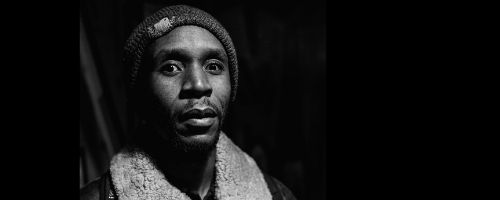Grappling with resilience in a world that has fundamentally altered
8 Apr 2021
Manu Maunganidze is a member of our Heritage Trade Up steering group, helping to shape this new programme to meet the needs of the sector. Here he explores the term resilience through the lens of a sector grappling with a world that has undeniably changed…

To my mind, there is something almost heroic about the word resilience; it speaks of some kind of strength or endurance or defiance. My first thought is of ecological resilience. Let me explain. The first 6 years of my life were in rural Zimbabwe. There was a seasonal river that runs 50 or so metres from the edge of our traditional homestead. Most of the time, the river doesn’t run at all; it is a wide, heavy bed of sand. And then the rains come and for a brief moment in time, it floods, bringing with it fish and other animals, soil and uprooted bushes and trees from further upstream. This brief period of nature’s violence and noise sometimes lasts for just a few days, and then everything returns to normal.
If you follow the media narrative, many thoughts of resilience over the past 12 or so months have been dominated by a return to normal. If only the pandemic would pass and people could start streaming through the doors again, buying souvenirs at the gift shop, donate to the new campaign, attend events and pay real money for real food and drinks at a real bar. All the while, the job losses have piled up, the collections have gathered dust, the cash reserves, if any, have continued to empty. All the while, questions of racial and social justice have hit the headlines, online learning and working have become the norm for some, and we have gained a new vocabulary of strangely agricultural-sounding words such as “furlough” and “herd immunity”. Meanwhile, the questions for heritage sector organisations and workers in this time have become more complex and numerous:
- How can our organisation survive?
- How can I as an individual continue to thrive in this sector?
- How can the sector as a whole continue to be relevant in this “new normal”?
- What skills are needed to thrive?
- What part can technology play in reducing costs, reinventing visitor experiences, connecting to new audiences, simplifying processes…? Do we have the money and skills to use it properly in the first place?
- How does the sector reckon with our renewed lens on issues of social and economic inequality?
- Do we even want to go back to “normal”?
- Are we even a heritage organisation if we don’t own a building and all the other hallmarks of “heritage”?
To carry on with the seasonal river analogy, the river does not return to normal when it dries out again. It is something else completely. In some parts, new life is allowed to thrive, in other parts the removal of vegetation has caused new places of erosion, weakness and opportunity. I get the feeling the heritage sector, like many other parts of the economy, is now just beginning to see what damage has been done by the storm, and also what new opportunities now exist. What lessons have been learned, and what new skills and resources are needed to respond to the new state of affairs.
The above questions formed the bulk of the conversation I had with Arike Oke, MD, Black Cultural Archives, and David Tittle, CEO, Heritage Trust Network, on the 26th March. There was an acknowledgement that there are some questions of resilience which were always there pre-Covid; financial stability, better staffing, more equal systems of employment for example. New questions, some stated above, had become more prominent because of the pandemic.

Watch the recording of the conversation ‘Resilience in the Heritage Sector’
“The question of resilience is at this moment in time, about answering those long-held questions of survival and resourcing, but also about how to adapt and thrive in a world that has undeniably changed”
Our new-found insistence on diversity should, as was pointed out by David and Arike, take on its multiple meanings. Diversity of financial models and sources of income. Diversity of methods of engagement and types of audience. Diversity of staff demographics in a world asking serious questions about why we continue to have, for example, racial and gender inequalities. Arike suggested that even our understanding of “heritage” is itself not diverse enough; what models of working would arise if we had serious conversations about what counts as a heritage organisation?
Prophetically, the Heritage Fund released a report on resilience in the sector in March 2020. It is an interesting and insightful if unsurprising read; money, skills, resources form the bulk of its focus. The learning and engagement offer from the SSE over the coming 12 months seeks to bring together “heritage” organisations to explore not just these perennial questions, which speak to resilience as a way of stubbornly carrying on; but just as importantly, how organisations and individuals in the sector and the sector as a whole can flourish in this “new world”.
Manu Maunganidze runs a non-profit called NYCE which promotes skill-based environmental engagement among city youth and other communities. He works as an independent adviser and consultant to a wide range of environmental and cultural organisations such as The National Trust, The Soil Association, City to Sea, Culture Declares, The Black and Green Ambassadors Project, etc. He is an SSE fellow of the Brewin Dolphin Start Up Plus programme, and a member of our Heritage Trade Up steering group.

